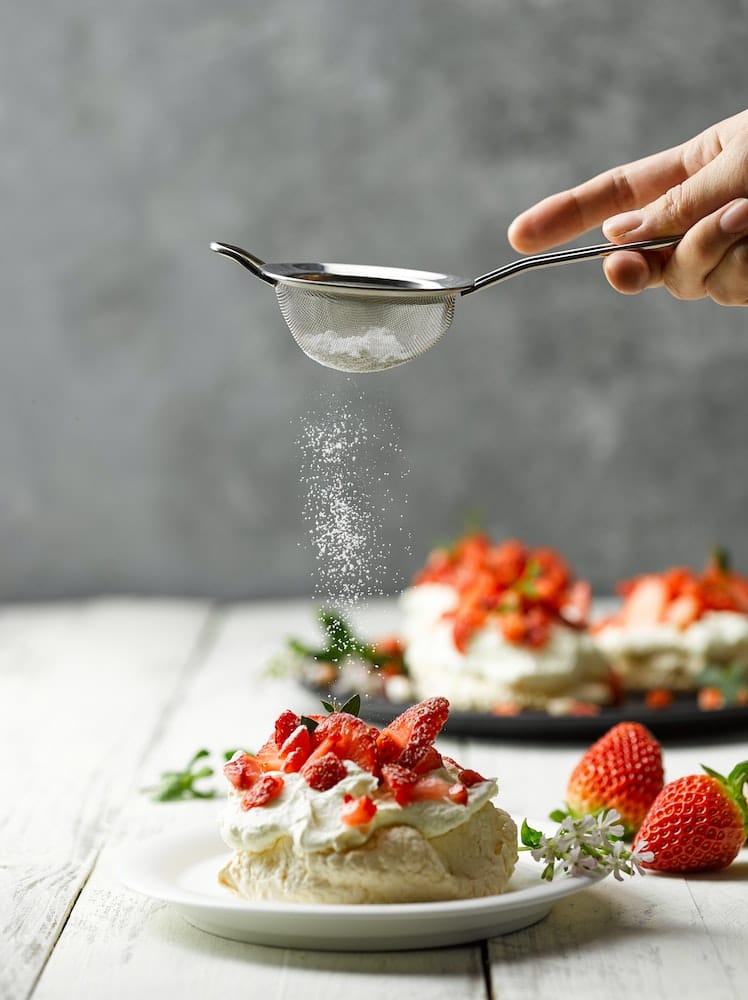Pavlova, a meringue-based dessert with a crisp exterior and a soft, marshmallow-like interior, is an absolute delight for the senses. Named after the Russian ballerina, Anna Pavlova, this dessert is as elegant and airy as a pirouette. The recipe requires precision, but the results are worth every minute spent in the kitchen. Today, let’s delve into the intricacies of baking a perfect pavlova – from the right choice of ingredients, the temperature of the oven, to the time needed for a perfectly baked meringue shell.
Perfecting the Meringue: The Heart of the Pavlova
The meringue forms the base of a pavlova. Getting it right is paramount to the success of your dessert. The process begins with egg whites: they must be at room temperature before you start whipping them. Cold eggs can lead to a denser meringue, which is not what we’re looking for in a pavlova.
En parallèle : How Can You Perfect a Savory Swiss Rösti with Crispy Edges and a Soft Center?
Begin by beating the egg whites in a clean, grease-free bowl. This is crucial as any fat or grease can prevent the whites from whipping up. As the whites start to foam, gradually add the sugar. The continuous addition of sugar helps to stabilize the egg whites and gives the meringue its glossy sheen. The meringue should be whipped to stiff peaks – meaning, when you lift the beaters, the peaks should hold their shape without drooping.
Temperature and Baking Time: The Key to a Crisp Shell
After you have perfected your meringue, it is time to focus on the temperature of the oven and the baking time. Pavlova is unique in that it has to be baked at a low temperature for a longer period of time. Too high a temperature can cause the meringue to crack, while too low a temperature can leave it undercooked and chewy.
Dans le meme genre : What Techniques Can You Use to Infuse Gourmet Olive Oils with Herbs and Spices?
Preheat the oven to 130°C (260°F). Place the meringue on a baking sheet lined with parchment paper and shape it into a circle. The meringue will expand a bit during baking, so ensure you have left enough space on the sides.
Bake for approximately 60-90 minutes, or until the meringue is crisp on the outside but still soft in the middle. The exact time will vary depending on the size of your pavlova and your particular oven, so keep an eye on it. Once done, turn off the oven and leave the pavlova inside until it has completely cooled. This slow cooling process helps prevent the shell from cracking.
Preparation of the Whipped Cream: The Topping
While your meringue is cooling, start preparing the whipped cream. This is a simple process but one that requires attention. Start with very cold cream – you can even chill the whisk and bowl for better results. Whip the cream until it forms soft peaks, then add a tablespoon of sugar and whip again until it holds its shape. Remember not to over-whip your cream or it will turn into butter!
Once your meringue is cooled, carefully transfer it to a serving plate. Fill the hollow center with the whipped cream, which will act as a bed for your fruits.
Assembling and Serving the Pavlova
Assembling a pavlova is where the real fun begins. First, take your cooled meringue shell, which should be crisp on the outside and soft on the inside. Next, spoon the whipped cream into the hollow center of the meringue.
Fresh fruits are the traditional topping for a pavlova. Strawberries, kiwi, passionfruit – the choice is yours. The tanginess of the fruit contrasts beautifully with the sweet meringue and cream, making for an unforgettable dessert experience.
Finally, it’s time to serve your masterpiece. Use a serrated knife to cut the pavlova into wedges. Do it slowly and gently to maintain the beautiful layers.
Tips and Tricks to Remember
When creating a pavlova, remember that patience is your friend. Don’t rush the processes, and be sure to follow each step meticulously.
One of the most common issues with pavlova is cracking. This is usually due to changes in temperature – either the oven temperature was too high, or the meringue was cooled too quickly. To avoid this, use an oven thermometer to ensure the temperature is accurate, and always let the meringue cool inside the oven.
Finally, remember that practice makes perfect. If your first pavlova doesn’t turn out exactly as you had hoped, don’t get discouraged. Baking is an art, and every artist needs time to master their craft. With persistence and a little bit of sweetness, you will soon be baking pavlovas that are as beautiful as they are delicious.
Now that you have all the necessary information, it’s time to put on your apron and start baking! Good luck, and happy baking!
Crafting the Perfect Pavlova: The Finishing Touches
Now that you’ve successfully baked the meringue and whipped up the cream, it’s time for the final touches to your pavlova recipe. This step involves decorating your confection with fresh fruits and a sprinkling of caster sugar for that extra sparkle.
Before you start, ensure that your meringue has cooled down completely. This is important because if it’s still warm, the whipped cream will melt and make a mess. Transfer the meringue to your serving platter, and be careful not to break the crisp outer shell. Next, spoon the whipped cream into the pavlova’s hollow center. The cream should hold its shape, forming a soft bed for the fruits to rest on.
Selecting and arranging the fruits is an essential part of this process. Traditionally, pavlova is adorned with a variety of fresh fruits, often ones that have a touch of tartness to balance out the sweetness of the meringue and cream. Strawberries, kiwi, and passionfruit are classic choices, but don’t be afraid to experiment with other fruits. Raspberries, peaches, or even a mix of tropical fruits can add a unique twist to your pavlova.
Once the fruits are arranged to your liking, give the pavlova a dusting of caster sugar. This not only makes the pavlova look more appealing, but it also provides a further sweet contrast to the tartness of the fruit.
Conclusion: Savoring Your Masterpiece
The final step of the pavlova journey is the best part – savoring your creation! Carefully cut the pavlova into wedges using a serrated knife to maintain the beautiful layers. Each slice should reveal a crisp shell, a marshmallowy interior, a cloud of whipped cream, and a colorful array of fresh fruits. The contrasting textures and flavors make each bite of pavlova a delightful experience.
Remember, the key to the perfect pavlova is patience and precision. Don’t rush through the steps, and be meticulous in your measurements and technique. Cracking is a common issue, but can be avoided by ensuring the right oven temperature and allowing the meringue to cool slowly inside the oven.
Creating a pavlova may seem challenging at first, but with practice, you’ll master the art of this delicate dessert. Whether it’s for a special occasion or just a sweet treat for yourself, a well-made pavlova is always worth the effort.
Now that we have walked you through each step of crafting a pavlova with a crisp shell and soft, marshmallow center, it’s your turn to give it a try. Remember the tips and tricks we’ve shared, and don’t be afraid to add your creative twist to it. We hope you enjoy the process as much as the outcome. Happy baking!






